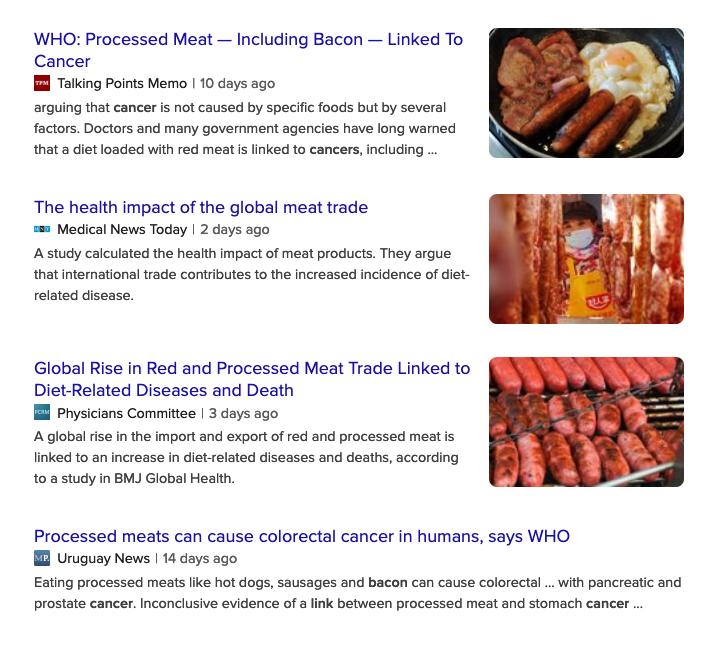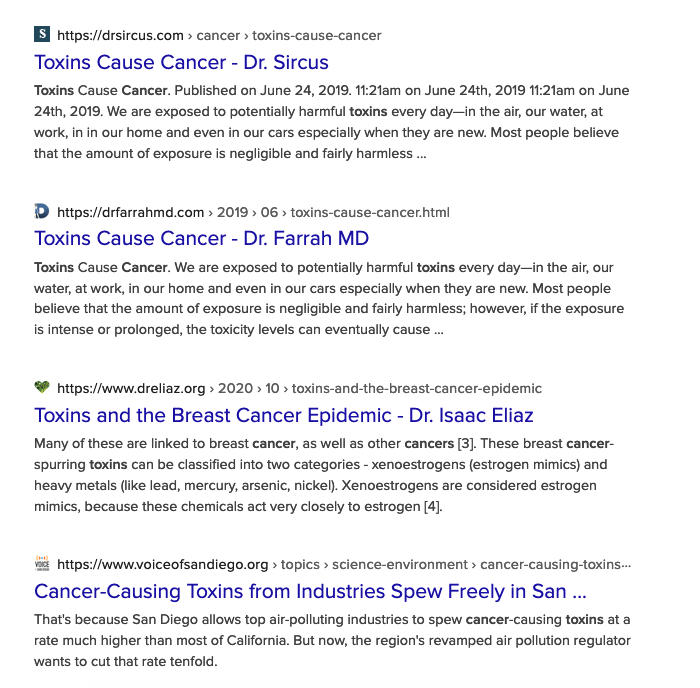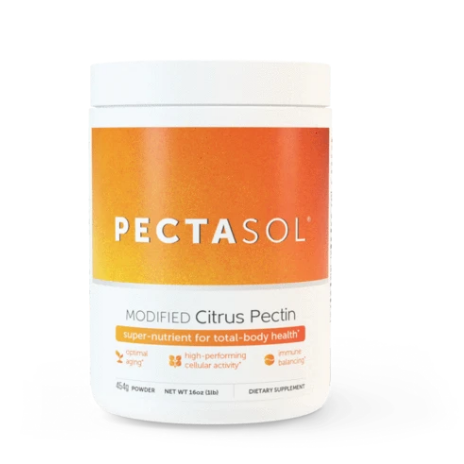This site is not intended to provide medical advice. Any information provided is purely for entertainment purposes. Always speak to your doctor before beginning a new health regime. Sponsored products may help maintain the costs of this site without costing you extra.
When we think of cannabis in the 21st century we most likely think of recreational use, however cannabis has a long medicinal history too. All across the world we observe different cultures utilise this multi-faceted weed for a variety of ailments. In fact, in the 1910 copy of Therapeutics, Materia Medica and Pharmacy we find an absolutely exhaustive list of health-problems that cannabis could supposedly rectify. See below.
- Analgesics or Anodynes (pg. 15)
- Aphrodisiacs (pg. 24)
- Deliriants (pg. 28 )
- Diuretics (pg. 30-31 )
- Hypnotics (sleeping pills) (pg. 39-37 )
- Narcotics (pg. 40-41 )
- Pulmonary Sedatives (pg. 42 )
- Vestical Sedatives (pg. 49 )
- Albuminuria (pg. 574 )
- Appetite (pg. 583 )
- Asthma (pg. 587-588 )
- Bladder, Irritable (pg. 591 )
- Bladder, Paralysis of. (pg. 591 )
- Bright’s Disease, Acute (pg. 593 )
- Bright’s Disease, Chronic (pg. 594 )
- Chordee (pg. 614 )
- Corns (pg. 624 )
- Cystitis, Acute (pg. 628 )
- Delirium (pg. 630-631 )
- Dysmenorrhea (pg. 643 )
- Dysuria (pg. 647 )
- Epilepsy (pg. 654-656 )
- Gonorrhea (pg. 674 )
- Headache, Congestive (pg. 680 )
- Hematuria (pg. 686)
- Hemicrania (pg. 687 )
- Impotence (pg. 700-701 )
- Insomnia (pg. 705-706 )
- Melancholia (pg. 730 )
- Metrorrhagia (pg. 734-735 )
- Neuralgia (pg. 740-741 )
- Opium Habit (pg. 749 )
- Ovaralgia (pg. 753)
- Ovaritis (pg. 753-754 )
- Pain (pg. 755-756 )
- Paralysis and Paresis (pg. 757 )
- Paralysis Agitans (pg. 757-758 )
- Pertussis (pg. 763 )
- Phthisis (pg. 766-768 )
- Tetanus (pg. 833-834 )
- Tic Douloureux (pg. 835-836 )
- Trismus (pg. 843 )
- Urinary disorders (pg. 853 )
- Uterine Cancer (pg. 860-861 )
Thanks to http://antiquecannabisbook.com/chap11/MedUses.htm for compiling that list.
These aren’t even half the ailments that our ancestors claimed could be resolved by consumption of cannabis. Was this a case of massive exaggeration to increase sales of said medicine? Well, that certainly could be the case. Although cannabis is currently, and was back then, a very cheap medicinal plant, easily grown and able to last in tough conditions, after all it is a weed. Whilst it is possible its effects were exaggerated to some extent, cannabis stands head & shoulders above even its herbal peers when it comes to the cornucopia of claimed medical uses. This leads me to believe there is an element of truth to its claims.
After spending some time researching the current cannabis related medical studies, as well as the valuable testimonials of people using cannabis as medicine. I look to highlight what I believe are some pertinent factors that contribute towards this powerful medicinal plant. In doing so I hope to bring forth useful knowledge that could possibly enhance this plants medicinal properties.
Lets look at cancer
Firstly I must bring attention to the already alarmingly high cancer statistics in 2021. According to the National Cancer Institute’s Surveillance Epidemiology and End Results (SEER) database, men have a 1 in 2 chance of developing cancer and a 1 in 5 chance of dying as a result. Whereas women favour slightly better with odds of 1 in 3 of developing cancer and 1 in 5 dying as a result.
These statistics are downright abysmal and judging by the clear evidence there is no sign of improvement anytime soon.
If we look at the definition of cancer we get something such as the following:
Cancer is a disease in which some of the body’s cells grow uncontrollably and spread to other parts of the body.
Cancer can start almost anywhere in the human body, which is made up of trillions of cells. Normally, human cells grow and multiply (through a process called cell division) to form new cells as the body needs them.
When cells grow old or become damaged, they die, and new cells take their place.Sometimes this orderly process breaks down, and abnormal or damaged cells grow and multiply when they shouldn’t. These cells may form tumors, which are lumps of tissue. Tumors can be cancerous or not cancerous (benign).
https://www.cancer.gov/about-cancer/understanding/what-is-cancer
This seems a fairly straight-forward understanding of what cancer is but when you ask the question why does this happen, things become less clear. We’re told something like this;
Usually, we have just the right number of each type of cell. This is because cells produce signals to control how much and how often the cells divide. If any of these signals are faulty or missing, cells might start to grow and multiply too much and form a lump called a tumour.
Mutations can happen by chance when a cell is dividing. They can also be caused by the processes of life inside the cell. Or by things coming from outside the body, such as the chemicals in tobacco smoke. And some people can inherit faults in particular genes that make them more likely to develop a cancer.
Some genes get damaged every day and cells are very good at repairing them. But over time, the damage may build up. And once cells start growing too fast, they are more likely to pick up further mutations and less likely to be able to repair the damaged genes.
https://www.cancerresearchuk.org/about-cancer/what-is-cancer/how-cancer-starts
Cancer it would appear is a general malfunction in the body that can often seem to happen for no rhyme or reason. However we are consistently told what things should give us cancer.


Again, this seems to resonate with what we assume to know about cancer, but why is it some people are susceptible and others are not. We often hear of the women who lived to 100 but smoked 40 cigarettes a day. Or the man who ate bacon & eggs every morning and lived to 95. A case of a superior immune system? An inheritable genetic trait we haven’t discovered yet?
Whatever the reason it seems cancer is framed in such a way that it is in someway the fault of the patient. Whatever the reason, somewhere along the line something that person had done helped develop their cancer. Whether it be from poor diet, smoking, or something that’s more readily being accepted, working alongside toxic or hazardous products.

However with all our knowledge of its supposed origins modern cancer research can be considered almost 100 years old. With the National Cancer Institute being opened by US President Franklin D. Roosevelt in 1937. In any case there is no real progress made in the actual cure for cancer. I won’t deny that there is evidence of new methodologies of helping people with cancer, or advances in early cancer detection, or even adjuvants to traditional cancer treatments such as radiotherapy or chemotherapy. Yet still, a real cure for cancer seems perpetually out of our grip.

This horrific disease is widespread, common, and almost inevitable, so is it any surprise we’ve yet to find a cure? Well, in the last 200 years or so “modern science” has supposedly cured; chicken-pox, Smallpox, Polio, Measels, SARS, Yellow Fever, Malaria, Tuberculosis and Diphtheria. Now these are mostly controlled by use of vaccine, so to define them as cured is maybe a little disingenuous, however that is what mainstream medicine tells us.
With cancer however we seem to take one step forward and two steps back. As new miracle remedies appear on the market, no sooner as they swiftly brushed under the carpet only to fall by the wayside of 100 more toxic chemicals that make developing cancer even more likely.
A critical prognosis
As per cancer.gov the traditional treatments for cancer are as follows;
But most people have a combination of treatments, such as surgery with chemotherapy and/or radiation therapy. You may also have immunotherapy, targeted therapy, or hormone therapy.
https://www.cancer.gov/about-cancer/treatment
We are all aware of how invasive and often destructive the modern methods in which we tackle cancer can be. In fact a 14 year study published in 2004 with a sample size of over 150,000 people named, The Contribution of Cytotoxic Chemotherapy to 5-year Survival in Adult Malignancies, showed that chemo is only 2.1% Effective Towards 5 Year Survival. Statistics that poor don’t even need explanation. Our currently understanding and treatment of cancer is clearly flawed.
Toxins causing cancer
It seems even mainstream science is now coming to the understanding that cancer is not a localised illness. Developing cancer seems to stem from a body that is out of homeostasis, what type of cancer itself manifests could be described as the weak-link in an already compromised system. Doing a quick Internet search will bring you a list of hundreds if not thousands of readily accepted carcinogens. A body burden of just one could lead to cancer, and the worrying fact is the synergistic effect of a lifetime full of these chemicals hasn’t even begun to be studied properly.

Did you know one of the most effective ways of keeping your body running smoothly is a toxin binder? Different binders have different affinity for specific types of toxins.
However one particular binder has been clinically proven to be effective against cancer. In fact it now has over 70 peer reviewed clinical and pre-clinical studies. It does this by targeting multiple stages of cancer metastasis.
What’s more it has been shown to even increase dramatically the efficiency of a conventional chemotherapy. This binder is a wonder product named modified-citrus-pectin. Find out more about MCP and it’s amazing properties.
A new origin
Through the hundreds of hours of pouring through medical material, journals, blogs, podcasts, interviews, lectures and so on. By sheer luck I stumbled upon some fascinating work by Jeffrey Dach -a Board Certified MD in Diagnostic and Interventional Radiology in the US. After attending the Highlights from the 14th Annual International Integrative Oncology Conference in San Diego, April 16th, 2016, Jeff states the following.
I was intrigued by a presentation by Dr Nooshin Darvish, of five cases of Glioblastoma Multiforme treated over ten years in her Holistique clinic located in Bellevue, Washington. All five tumor biopsy samples stained positive for the spirochete parasite, Borrelia, the organism found in Lyme disease.(1) The patient’s tumours regressed upon treatment for parasitic disease, and progressed when treatments were halted. The pathology report by Alan MacDonald, M.D.,can be seen here: Glioblastoma Five cases positive for Borrelia FISH Probes Alan MacDonald Darvish.
This information was new to me, so I wondered if Borrelia had been associated with any other types of cancer. A quick literature search answered the question. Dr Claudia Schöllkopf reported in Blood 2008 that patients who tested positive for Borrella antibodies had a 4 times higher risk of Mantle Cell lymphoma. (2) Four years previously, in 2004, Borrelia organisms had been identified in two cases of nodal lymphoma.(3)
Cancer as a Parasitic Disease is an Old Idea
Cancer as a form of parasitic disease is actually an old idea originally proposed by early microbiologists. They considered the idea self evident from their microscopic observations of cancer cells.
https://jeffreydachmd.com/2016/05/cancer-as-a-parasitic-disease/
I couldn’t believe the information I was reading. How utterly fascinating. Cancer as a parasitic disease is something that seems fundamentally opposed to everything we’ve been taught, yet at the same time it resonates perfectly with every cause of cancer we’ve been led to understand.
There are those that would scoff at the idea before reading the research. To which I would direct them to Dr Jeffrey Dach’s page in which he provides over 80 published medical studies outlining the significant connection to cancer being directly linked to a type of parasite. Now this has peaked my interest.
Working backwards to the cure
If we are to assume cancer as a disease that has originated as a form of parasitic infection it can open a completely new line of un-tapped research. It essentially allows us to work backwards in the hope of finding methodologies to alleviate this disease. After all, how can you possibly attempt to find a cure for something that you don’t understand the cause of.
Why is the medical industry so desperately focused on finding ways of maintaining and extending a cancer-patients life rather than curing the disease. Some people may suggest that this is precisely what a great number of well-intended scientists are doing right now. I do not doubt this for a second. Unfortunately the medical industry is not governed by scientists alone but by governments, pharmaceuticals companies, and other vested interests, of an industry worth $156 Billion Dollars in the United States alone! There’s more than just one group who don’t want to see such an unfathomable amount of money just ‘go away’ thanks to a breakthrough cure.
But if such a claim so sensational such as cancer being caused by parasites would be true, then surely there would be evidence to suggest this is the case? Now again, if we are to work backwards with a new ideology of the cause of cancer, how would we go about this?
As we are unlikely to find much in the way of treating cancer with anti-parasitic drugs in the official literature, as such a thing would highlight this paradigm-shifting theory, then I needed to look at the alternative healing therapies long associated with cancer. (Although there are several anti-parasitic drugs that have been repurposed as anti-cancerous, go figure) After all, there is a huge volume of people who have successfully cured their cancer without the use of modern allopathic medicine (the medical industry would like you to believe otherwise). You only need to do a brief search for alternative cancer healing methods to find all manner of weird & wonderful treatments. Are they all effective and successful? Probably not, but if we are to believe our new cancer theory of origin, then surely we would find some connecting factor between treatments.
Want to be up-to-date? Join our Newsletter
Run from the cure
Here we need to take a slight detour to set up the final part of this article. I’ve always been fascinated by cannabis medicinal properties. Ever since I first watched a documentary many years ago named: Run from the cure: The Rick Simpson Story. Something I highly recommend checking out if you have the time.
This was a simple story of a man fallen ill who was side-lined by modern medicine. With cancer on multiple parts of his body Rick was told to get his affairs in order as there was nothing that could be done. Not discouraged by this tragic news Rick recalled a radio bulletin he had heard many years ago about the therapeutic use of hemp as an anti-cancer agent. Eager to try such a peculiar treatment Rick immediately got in touch with his doctor to prescribe him such a treatment. Unbeknown to him, Rick’s doctor would go on to explain there was no evidence hemp would provide him any therapeutic benefit, and would likely damage his lungs. This saga went on with Rick requesting for the hemp extract so he could ingest the substance orally. Again, he was denied.
This is where Rick took it upon himself to grow, create, and use the hemp oil extract on his own terms. I’m sure you can guess the outcome. Rick was miraculously cured from his cancer and had gone on to live a normal life. Not only has he helped himself, he has spent the best part of half his life trying to spread this innovation and supply such a medicine to as many people as humanely possible.
Whilst numerous cell culture and animal studies showed antitumor effects of cannabinoids in various cancer types, it proves more difficult to pin down solid information regarding human cancer studies using cannabis. This is not to say they haven’t been done of course, but most studies use cannabis as an adjuvant to allopathic techniques. Without the studies being phrased as studying cannabis as an adjuvant to poisonous treatments such as chemotherapy or radiotherapy, we can safely assume the studies would not be performed at all.
In recent years, cannabinoids have been extensively studied for their potential anticancer effects and symptom management in cancer patients [7–9]. One of the first studies describing antineoplastic activity of cannabinoids was published in 1975 [10]. Potential antitumor activity of plant-derived or phytocannabinoids, e.g., (−)-trans-∆9-tetrahydrocannabinol (THC), cannabinol (CBN), ∆8-THC, cannabidiol (CBD) and cannabicyclol (CBL), as well as of synthetic cannabinoids, such as WIN-55,212-2, is the focus of current research [7,8,11]. In the 1990s, the main components of the endocannabinoid system (ECS) were identified as follows: (i) two types of cannabinoid (CB) receptors, CB1 and CB2 receptor; (ii) two main endogenous ligands (endocannabinoids) in mammals, anandamide or N-arachidonoyl ethanolamine (AEA) and 2-arachidonoylglycerol (2-AG); and (iii) endocannabinoid metabolic enzymes, fatty acid amide hydrolase (FAAH) and monoacylglycerol lipase (MAG lipase).
https://www.ncbi.nlm.nih.gov/pmc/articles/PMC6387667/
Aside from THC being shown to have anti-cancer/anti-tumour qualities, what else do we know about the traditional remedies of cannabis or hemp as it was more commonly known.
Cannabis as an anti-parasitic
As we’ve already agreed we are now working backwards from the cause to the cure. If we are to believe that cancer is caused by parasites, and cannabis is confirmed to have anti-cancerous properties, would it be logical to assume that cannabis also has anti-parasitic qualities? Let us investigate.
In May 2015 a population of foragers in the Congo Basin, the Aka, were studied to determine if their cannabis use was an unconscious form of self-medication for helminths. Helminths are more commonly known as parasitic worms. It was shown that there were significant negative associations between THCA (tetrahydrocannabinolic acid) levels and worm burden. What was more surprising was the group who ingested cannabis had less chance of reinfection with helminthes 1 year after treatment with commerical anthelmintics.
In 2017 6.2million people were infected with Chagas disease, a biting insect known to bite victims lips, hence it’s nickname as the kissing bug. Current traditional pharmaceuticals treatments are extremely ineffective in its early stages, and becomes less effective as the disease advances. Researchers from Mexico and Boliva tested the synergistic effects of the terpene lupenone and the cannabinoid/terpinoid caryophyllene (at ratios of 1:4 respectively) against the parasite.[1]” Results of both the laboratory phase and the animal experiment, showed that the synergistic effect of both plant-based compounds significantly reduced nesting in the heart and skeletal muscles of the test mice. Thus, if confirmed in human trials, we are closer to a new, safe, natural, cannabinoid-based and inexpensive option for the treatment of Chagas disease in the chronic stage.
Another groundbreaking study originally released in 2004 demonstrated cannabis leaf extract had lethal efficacy against the larvae of Chironomous samoensis Edward: an insect of public health concern.
The antifungal activity of aqueous extract of Cannabis sativa, Parthenium hysterophorus, Urtica dioeca, Polystichum squarrosum and Adiantum venustum was investigated in a 2011 study against Alternaria solani, Alternaria zinniae, Curvularia lunata, Rhizoctonia solani and Fusarium oxysporum. At 20%, maximum antifungal potential was observed with the extracts of C. sativa, which recorded excellent inhibitory activity against C. lunata (100%).
THC shows activity against cultured Plasmodium falciparum.
One piece of research that tested 34 different plant terpenoids against the nematode Caenorhabditis elegans found that several terpenes commonly found in cannabis, including nerolidol, geraniol, citronellol, limonene, and eugenol, had significant anti-nematode activity.
Cannabis clearly has potent anti-parasitic characteristics which are likely due to a variety properties which deserve further research. However one property I was able to determine as important was cannabis’ terpene profile. Terpenes are an aromatic compound that determine the smell of a particular plant. You’ll most likely hear the word terpenes in the same sentence as cannabis although they appear in a huge assortment of other plants. Whilst cannabis is reported to contain more than 150 different terpenes in small amounts, only a rich few give it that unmistakable flavour.
What’s so important about terpenes?
Little was known about the distinct properties of cannabis and its rich terpene profile until very recently, likely due to the expanding recreational cannabis community and its terpene-loving connoisseur like following.
Terpenes play an integral role in a cannabis plant’s growth and survival. Besides producing distinctive aromas, these organic compounds also enrich colour and pigmentation in leaves and buds, and contribute to the flavour of cannabis. In short, terpenes help to enhance the plant’s attractiveness to some creatures, while deterring others that can do harm.
Certain terpenes like geraniol, for example, repel insects or herbivores that might be tempted to snack on cannabis. Other terpenes, like terpinolene and linalool, attract insects and other small creatures that can help spread pollen. These aromatic compounds support the plant’s immune system by conveying information about the surrounding environment, protecting plants from stressors and pathogens and helping to trigger immune responses.
https://www.leafly.com/news/cannabis-101/terpenes-the-flavors-of-cannabis-aromatherapy
We’ve established terpenes do more than simply add enjoyable flavour to a plant. Recently much attention has been given to Caryophyllene– one of the most commonly found terpenes in cannabis, this compound gives a spicy-peppery smell to certain strains. It comes as no surprise that black pepper also has high amounts of Caryophyllene (more on that later). This particular terpene stands out because it’s the only known terpene that can bind to the CB2 receptor in the endocannabinoid system.
What’s interesting is Caryophyllene has been shown to have tremendous anti-cancer, anti-oxidant and anti-microbial properties. Results showed that β-caryophyllene demonstrated selective antibacterial activity against S. aureus and more pronounced anti-fungal activity than kanamycin. β-Caryophyllene also displayed strong antioxidant effects. Additionally, β-caryophyllene exhibited selective anti-proliferative effects against colorectal cancer cells.
Another study first published in 2013 demonstrated the compound (β-caryophyllene) presents antimicrobial, antioxidant, anaesthetic, and anti-inflammatory activities as well as exhibiting anticancer potential through its toxic action towards several tumor cell lines [31–35]. To this extensive list of activities of β-caryophyllene, its antileishmanial (leishmaniasis is a sub-tropical parasitic disease) property can now be added although the mechanism of action is presently unknown.
In 2019 the contact irritant and non-contact repellent activities of β-caryophyllene oxide were evaluated against laboratory strains of female Aedes aegypti (USDA strain), a major arbovirus vector and Anopheles minimus (KU strain), a major malaria parasite vector. Anopheles minimus was found to be more sensitive to β-caryophyllene oxide than that of Ae. aegypti and exhibited high avoidance response rates (86-96% escape) at 0.5% and 1.0% concentrations in contact and non-contact trials compared with Ae. aegypti (22-59% escape).
In a further study published in 2016 Eugenol, α-pinene and β-caryophyllene from Plectranthus barbatus showed a significant toxic effect against larvae of An. subpictus, Ae. albopictus and Cx. tritaeniorhynchus.
Another cannabis terpene limonene shows great promise as an anti-parasitic in a study from April 2009. A significant decrease in the parasite load was shown in the lesions treated topically with limonene by histopathological examination. The intrarectal treatment was highly effective in decreasing the parasite burden, healing established lesions and suppressing the dissemination of ulcers.
Terpenes in more than just cannabis
As we can see β-caryophyllene has shown to be more than a potent smelling terpene. Showing anti-microbial, anti-cancer and anti-parasitic effects, wouldn’t it be great if we could see what other plants contain this intriguing medicinal quality.
Terpenes, the aroma molecules found in essential oils, engage CB2, the cannabinoid receptor that’s found predominantly in the immune system. Black pepper, lavender, clove, rosemary and cinnamon essential oils contain a sesquiterpenoid that’s called beta-caryophyllene (βCP).
https://draxe.com/nutrition/herbs-superfoods-with-cannabinoids/
Unsurprisingly black pepper, lavender, clove, rosemary and cinnamon are all common ingredients in your basic herbal parasite cleanses. Seeing as we’ve established caryophyllene to have potent anti-parasitic qualities its likely this has some role to play. Following our parasitic-cancer relationship theory it should come as no surprise that studies strongly suggest that black pepper and cardamom exert immunomodulatory roles and antitumor activities as well.
Search for supplements with Black Pepper Extract
Broccoli is also a food containing high amounts of caryophyllene and has demonstrated robust anti-cancer effects likely due to its sulforaphane content.
Find a high quality Sulforaphane Supplement
There are studies that support the anticancer properties of CEO (Clove Essential Oil) and its major active component eugenol.
Get yourself some Clove Essential Oil
I could continue but I think you’re getting the point.
Conclusion
The terpene Caryophyllene has shown both potent anti-parasitic and anti-cancer effects. Foods that contain the terpene Caryophyllene have been shown to be both anti-cancerous and anti-parasitic in nature. Anti-cancer & anti-parasitic effects are not limited to just caryophyllene either. One piece of research that tested 34 different plant terpenoids against the nematode Caenorhabditis elegans found that several terpenes commonly found in cannabis, including nerolidol, geraniol, citronellol, limonene, and eugenol, had significant anti-nematode activity.
So what does all of this mean and how can it help people using cannabis to fight cancer, such as those using high-strength cannabis oil? Whilst information on the production of cannabis oil is usually limited to a private discussion between patient and dispensary (in places where cannabis is legal)- I feel we have identified certain terpenes that should definitely be included in a cancer-fighting protocol. Meaning when an RSO or concentrated cannabis oil is being created then it would be logical to choose strains high in; β-caryophyllene, limonene, eucalyptol and terpinolene. Not only that, but foods containing these terpenes should also be considered important to include in the diet.
Cannabis strains containing these turpenes
- GSC
- Gelato
- Bubba Kush
- Chemdog
- Master Kush
- Candyland
- Sour Diesel
- Banana OG
- Berry White
- Black Cherry Soda
- Cinex
- Do-Si-Dos
- MAC
- Purple Hindu Kush
- Quantum Kush
- Strawberry Banana
- Tahoe OG
- Wedding Cake
- White Fire OG
- GMO Cookies (garlic cookies)
- London Pound Cake
- Madman OG
- Ruderalis
- Jolly Rancher
- Ghost Train Haze
- Chernobyl
- XJ-13
- Golden Pineapple
- Golden Goat
- Jack Herer
- Super Lemon Haze
- Dutch Treat
- Pineapple Kush
- Clementine
Foods containing these terpenes
- Black pepper and black pepper essential oil
- Clove and clove essential oil
- Rosemary and rosemary essential oil
- Oregano and oregano essential oil
- Cinnamon and cinnamon essential oil
I believe there’s enough science-backed data to establish several key points; cannabis is anti-cancerous, cannabis is anti-parasitic, cancer behaves like a parasite, certain cannabis terpenes are more effective against both parasites & cancer than others. Next time you either order or make your own cannabis oil, consider using strains based on their terpene profile for a more effective medicinal product. What’s more, thanks to its proven anti-anxiety effects, I think we could all do with a little more Caryophyllene in our lives.
Read my Basic Parasite Cleanse: A Daily Routine
Products mentioned in this article:
Sulforophane (high quality broccoli extract): https://amzn.to/3o5xmzY
Modified citrus pectin (Pectasol-c): https://amzn.to/3d0Cqz7
Clove oil extract: https://amzn.to/3E53zNp
Black pepper essential oil: https://amzn.to/3I8bID6
Lavender essential oil: https://amzn.to/3I3APqB
Rosemary essential oil: https://amzn.to/3xBxR83
Oregan essential oil: https://amzn.to/3Ebsa2Q
Cinnamon essential oil: https://amzn.to/32CFVK1

If you think this article was valuable information, consider donating! Every bit of generosity keeps this site running and allows me to continue sharing content with awesome people like you!





